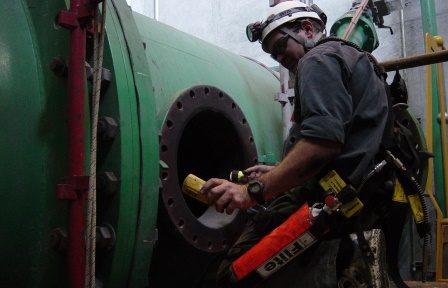In my travels I have come across a multitude of complaints about gas detection instruments. Much of these issues are caused by high humidity and the inability for the sensors to provide accurate readings. This guide introduces some of the facts you should know about gas detection. For more detailed information contact our sales team.
Gas detectors come in a variety of sizes, shapes, colours and sensor configurations. For confined space work, it is necessary to monitor for oxygen deficiency/enrichment, combustible gases and toxics deficiency/enrichment, combustible gases and toxics. An instrument capable of dealing with these three hazards is necessary.
Unfortunately much of the procurement of equipment is decided on price. Selection of gas detection should be made by someone who is qualified and experienced. Some higher quality instruments are more reliable and will perform far better in high humidity and in the end save a life.

SENSOR TECHNOLOGY
Catalytic Combustible Gas Sensors .These sensors look for explosive atmospheres and detect combustible gases by causing an actual combustion of gases within the sensor chamber.
Catalytic sensors offer good linearity, and can react to most combustible gases. However, as resistance change to %LEL is quite small, they work better in concentrations between 1,000 and 50,000 PPM. They do not measure trace amounts of gas (under 200 PPM) and therefore are of no use in determining toxic levels.
The disadvantages are
- They must have a minimum of 14% oxygen content in the air to work accurately
- The sensor can be damaged by lead or silicone or other catalytic poisons
- They tend to loose their linearity after a year or so
- They respond poorly to low energy hydrocarbons such as oil vapours, kerosene, diesel fuel and commercial jet fuels.
- The readings can be affected by humidity and water vapour condensation.
- They are not recommended for use in an acetylene atmosphere.
- The flame arrestor will prevent ignition of most gases except acetylene outside the sensor. It is extremely important to check the approvals for which type of hazardous locations the detector can function in.
CALIBRATION
Gas sensors start losing accuracy soon after they are manufactured as a normal result of exposure to air and other gases. The loss of accuracy is called “sensor drift”. Older sensors and those that have been exposed to high concentrations of their target gas have greater sensor drift. Calibration is one way to compensate for sensor drift.
During the calibration, a sensor is exposed to a specific concentration of target gas. Because of sensor drift, the amount of gas the sensor detects will differ from the amount of target gas to which the sensor was actually exposed. Calibration determines the difference and adjusts the instrument readings up or down to compensate. Regular calibration is necessary to ensure accurate readings.
Most manufacturers recommend that their gas sensors be calibrated monthly and after a significant gas exposure. Check your operations manual for the recommended operations calibration schedule.
